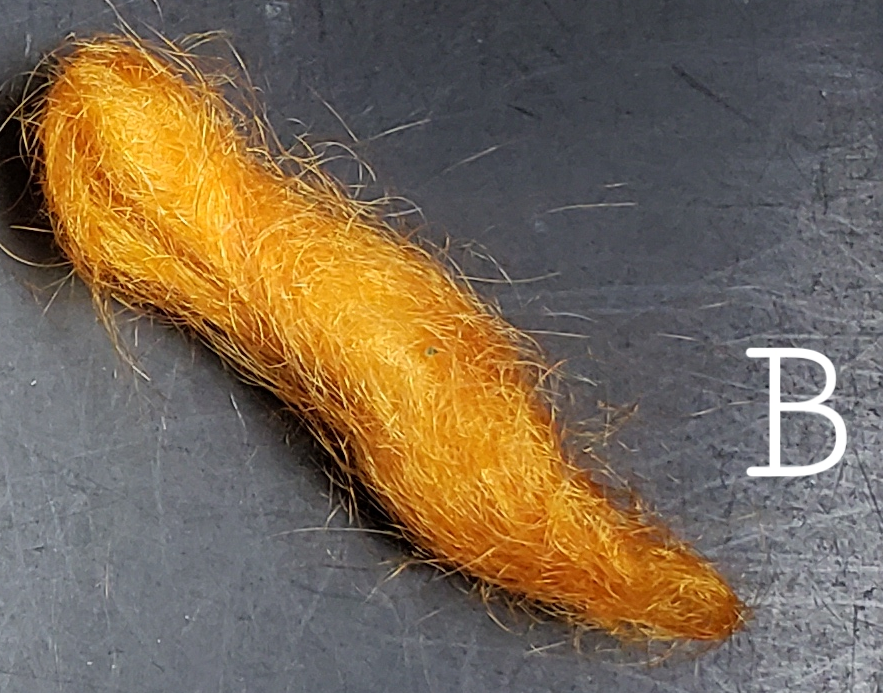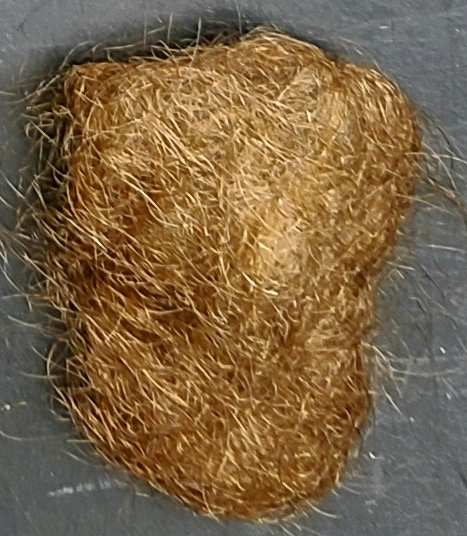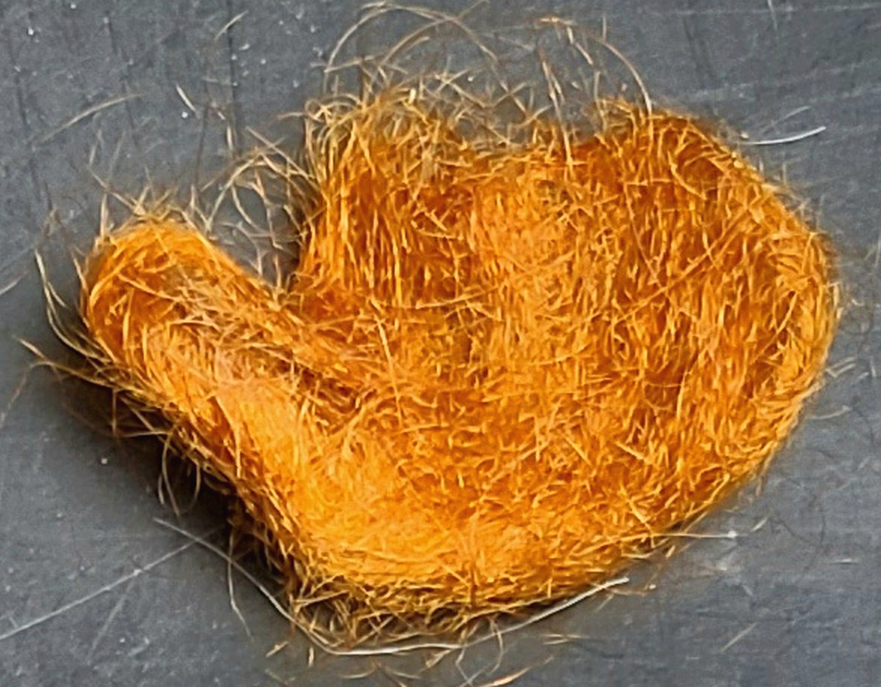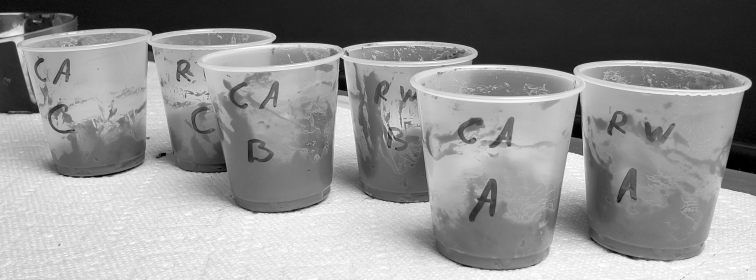
Working in customer service, we frequently hear “What happens if I use the Rainwash to dye release my henna?” and “I accidentally used Rainwash instead of my fruit acid to dye release my henna; will it still work?” Well, we’re going to do a small set of tests because we want to find out will Rainwash effectively dye release henna and cassia?
Ancient Sunrise® Rainwash is made up of three ingredients: citric acid, ascorbic acid, and xanthan gum. We know that this is acidic due to the citric acid and ascorbic acid. One teaspoon of Ancient Sunrise® citric acid is needed for 100g of Ancient Sunrise® henna and/or Ancient Sunrise® cassia, so I’ve decided to use the ratio of 5 grams of Ancient Sunrise® Rainwash to 100g of Ancient Sunrise® henna and/or Ancient Sunrise® cassia. Ancient Sunrise® indigo does not need an acidic component and therefore will be mixed with distilled water before combining it with henna.
Note: Mixing Ancient Sunrise® Rainwash with your henna paste will not take the place of using the Rainwash as a mineral removing treatment prior to your application. You still need Rainwash or a clarifying shampoo prior to every henna application for best results.
Setting up the Mixes
Key: RW = Rainwash g = grams CA = Citric acid
Rainwash Mix:
| RW A | RW B | RW C |
|---|---|---|
| Henna only | Henna and Cassia | Henna and Indigo |
| Henna – 6 g | Henna – 3g | Henna- 3g |
| RW – 0.31 g | Cassia – 3g | RW- 0.16g |
| RW – 0.31g | Indigo- 3g |
Citric Acid Mix:
| CA A | CA B | CA C |
|---|---|---|
| Henna only | Henna and Cassia | Henna and Indigo |
| Henna – 6 g | Henna – 3g | Henna- 3g |
| CA – 0.31 g | Cassia – 3g | CA- 0.16g |
| CA – 0.31g | Indigo- 3g |

When mixing the henna and cassia with Rainwash, I noticed that the paste seemed smoother than when using citric acid. This is due to the xanthan gum in Rainwash, which creates a gel-like texture when mixed with a liquid. The paste also stuck to itself and the mixing utensil more than the other batch of samples that were mixed with citric acid. (The powders all seemed to take more water than I thought they would need.) I had the henna and cassia/henna paste all sit for 8 hours in 72 degrees Fahrenheit.

Prior Dye Release 
Post Dye Release
Tip: If you see brown or green streaks in the paste, keep mixing until all of the paste is one color. Applying the paste to the hair that has streaks of different colors will result in an uneven application.
Hair prep
Each hair sample used was prepped with Rainwash and Dawn dish soap. This helps eliminate mineral build-up and oils. Then they were towel dried before applying the pastes to the hair samples.
The Results

Control
Citric Acid Mixes

(A) After First Wash 
(A) After oxidation

(B) After First Wash 
(B) After oxidation

(C) After First Wash 
(C) After oxidation
Rainwash Mixes

(A) After First Wash 
(A) After oxidation

(B) After First Wash 
(B) After oxidation

(C) After First Wash 
(C) After oxidation
The results were similar to each other, but there are some differences worth noting. It’s interesting that groups A and B look more similar before oxidizing. In fact, the Rainwash mixes almost look like they’ve may have faded slightly. This would make sense, since the Michael Addition may not have been able to fully bind due to the xanthan gum.
Seven days after the initial application and washing the hair four times, I viewed the samples side by side for color comparison since the color had finished oxidizing. See the comparison notes below:
Side by side comparisons of oxidized mixes:

CA-A 
RW-A

CA-B 
RW-B

CA-C 
RW-C
It is safe to say that the xantham gum in the Rainwash impacted the indigo mix the most. The other two groups have only slight differences.
In conclusion, you might be able to get away with using Rainwash in a pinch to dye release henna and cassia since the results are similar to using citric acid. I do not recommend using the Rainwash in a pinch if you plan to use indigo in your mix because the color was lighter and may not work for the results you’re wanting. Due to the xanthan gum, it’s best not to plan on using Rainwash as we do not know if the hair may fade over a long period of time since these samples were tested for a shorter period of time. So…did Rainwash effectively dye release henna and cassia? It seems so, but just count on maybe having to overlap a little when you touch up your roots next.
For more information on what you can use in the house to dye release your henna paste see this article: https://www.ancientsunrise.blog/dye-releasing-henna-and-cassia-with-items-in-your-home/
If you’re looking for fruit acids to use with your mix, you can find Ancient Sunrise® Fruit Acids here: https://www.mehandi.com/SearchResults.asp?Cat=120
For assistance with mixing or instructions, get ahold of our customer service experts or visit https://www.mehandi.com/kb_results.asp?cat=2.
 Liz • Ancient Sunrise® Specialist
Liz • Ancient Sunrise® Specialist





